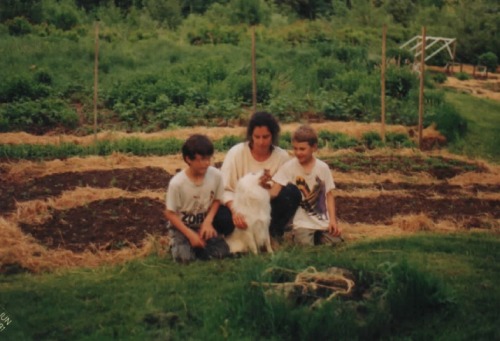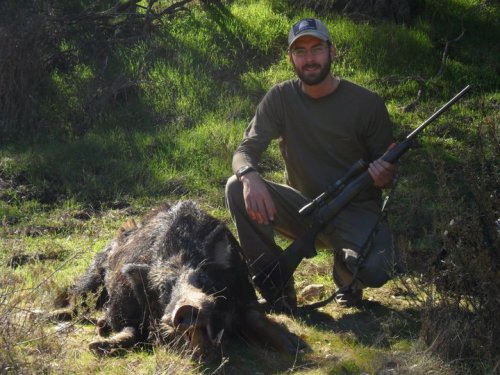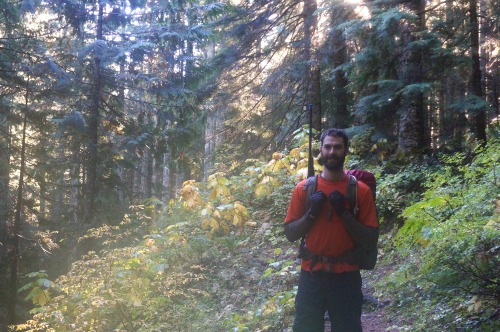 I grew up on the edge of the White Mountain National Forest in northern New Hampshire. My parents were not hunters, but they were dedicated to providing as much food as possible from the land. We raised chickens every year, and my mother slowly expanded her garden. Fresh vegetables were a staple in summer, while frozen chicken and root vegetables held us through much of the long winters. I was taught to respect both the land itself and the animals we ate — and to be aware of the effort it takes to have this food.
I grew up on the edge of the White Mountain National Forest in northern New Hampshire. My parents were not hunters, but they were dedicated to providing as much food as possible from the land. We raised chickens every year, and my mother slowly expanded her garden. Fresh vegetables were a staple in summer, while frozen chicken and root vegetables held us through much of the long winters. I was taught to respect both the land itself and the animals we ate — and to be aware of the effort it takes to have this food.
“Leland Brown is the Wildlife and Lead Outreach Coordinator for the Oregon Zoo. All photos courtesy of Leland Brown. Editor’s note: This piece is part of our #iHuntBecause and #iFishBecause campaigns designed to connect the passion of hunters and anglers to the fruits of conservation. Through the submission of photos and stories, fans will share their love of recreation with us while learning about our agency’s roots in hunting and fishing. Submissions reflect the views of the author and do not necessarily reflect the views of the Service.“

As a teenager my older brother began hunting with friends. He introduced me to shooting, and I started to think about how to get my own food from the wild. I eventually went to university to study biology, learning more about the history of hunting and conservation in North America. That strengthened my resolve to learn how to hunt, to find my own food, and actively contribute to the conservation of the land and animals we care so deeply about.
After graduation, I ended up on the southern California Channel Islands, working for an invasive control program. Working with that team gave me the skill and motivation I needed to begin hunting more consistently. It also gave me the opportunity, a few years later, to move north and run a feral hog removal program. It was a crash course in feral hog biology and ecology, and it was there that I really began hunting in earnest, tracking and shooting full-time. From there, I had the opportunity to work in Hawaii, controlling invasive species from hogs to goats to mouflon sheep and even feral cattle.

I’ve been extraordinarily lucky with the opportunities I’ve been given. I love watching the land wake up around me and watching it go to sleep in the evening — learning about different species, seeing how they survive and interact, watching the world as I make my way through it. One of the things I have always been proud of as a hunter is the community’s dedication to the conservation and care of wildlife. We use the animals we kill, we are connected with them, and we care deeply about their habitat and all the wildlife that use it.
That is one of the reasons I use non-lead ammunition. Evidence shows that lead bullet fragments left behind in offal can accidentally kill non-target wildlife, and that does not match what I believe to be my responsibilities as a hunter. I work to make sure the one animal in my sights is killed as quickly and humanely as possible. If I accidentally take another animal — no matter what species — I have failed the trust placed in me by my fellow hunters and the generations that came before. Not only did I take an animal I didn’t mean to, but now it goes to waste, and I misrepresent hunting to the non-hunting public.
Hunting is a great activity; it connects us more deeply with the land, with what we eat and with our abilities. I hope we can continue to hunt in perpetuity, and that we continue to live up to the ethical and conservation traditions that have been passed down to us. I hope more people learn to hunt, and in doing so increase support for wildlife and habitat conservation. Hunting connects us to this reality: we need to work to protect the wild lands and animals that use them, because we need them just as much.

Why do you do what you do? Tell us why you hunt and fish and share your photos with us on Facebook, Instagram, and Twitter by using #iHuntBecause and #iFishBecause.
